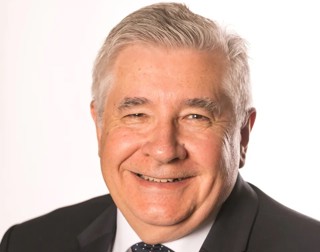Most people would recognise that it is polite and courteous to greet customers appropriately when they enter or deal with your business.
Whether it is necessary for a manufacturer to state that a customer has to be greeted within a certain timeframe is open to question.
 |
||
|
Professor Jim Saker is director of the Centre for Automotive Management at Loughborough University’s Business School. He has been involved in the automotive industry for more than 20 years. |
||
The point is that how you greet people for either the first time or subsequently matters a great deal. It sets the tone of the conversation and the possibility of successful commercial engagement. The university sector is trying to come to terms with the transformation of what used to be called ‘students’ who are now paying for their education through loans and are very much more being regarded as customers.
I started to reflect on this as I boarded an aircraft for a long-haul flight to Singapore. I dutifully presented my ticket at the door of the plane and the stewardess said: “Welcome back, Professor Saker. It’s good to have you on board again.”
I was pleased to be greeted in this way but cynically knew that all that she was doing was reading my frequent flyer status on the ticket and this is what she had been told to say. In reality, I was part of a process and I had been welcomed, but not necessarily been made to feel welcome. The journey went to schedule and I was dutifully thanked as I got off the flight.
How did she know who I was?
Arriving in Singapore, I arrived at a mid-range hotel and checked into the club floor and was allocated a room.
The following morning, the person in charge of the club floors in the hotel came up to me at breakfast and simply said: “Welcome back, Professor Saker. It’s good to have you staying with us again.” I panicked. Firstly, I hadn’t stayed at this hotel for more than 18 months; secondly, they had never taken a picture or photocopied my passport; thirdly, I had never had more than a cursory interaction with her in my previous stays; and fourthly, she couldn’t have identified me by my room number because I was sat having breakfast. How did she know who I was?
This became a major focus of interest. I spoke to a few colleagues and one said that he had stayed at an upmarket hotel in the States and noticed that, as he was checking in they had pulled up his LinkedIn page on their computer screen. He asked why they were doing this and they replied that they tried to get as much information about their guests as possible before their arrival so that they could tailor their offering to his or her preferences. He was suitably impressed and took note to make sure his LinkedIn page included that he liked to be greeted with free champagne on arrival at any hotel.
Tricks of the hotel trade
The problem was that this did not solve my problem with my Singaporean hotel manager. This was not an upmarket hotel and she was not part of the check-in process, so how did she know?
The following day I plucked up the courage and asked her. She simply said she always tried to remember as many of the guests that stayed on the club floors as possible and that she looked at the guest list every day to see if she recognised any names.
Mine was easy. It was a slightly unusual name and was prefixed with the title ‘Prof’. Although she would not have remembered me, she was able to recognise me. She finished by saying she wanted to make people feel welcome.
The difference between being welcomed and being made to feel welcome was quite stark. By being professional and taking her job seriously, this manager had undoubtedly made people feel welcome. I was even left with a slight sense of guilt that, although I had stayed at that hotel 18 months ago, I had stayed in other Singaporean hotels in the interim and now felt slightly disloyal.
Reflecting on experiences in the motor sector, there are dealerships with numberplate recognition software that allows a receptionist to greet people by their name as they walk in, but this is fairly rare.
Often as I enter a dealership for the umpteenth time, I am not recognised but am greeted by a fresh-faced individual who is trying to meet the manufacturer standard of warmly embracing me within the requisite three minutes.
With the increased use of social media, there is no reason why dealers should not have access to information that would help in the customer-handling process. A lot of work is being done in this area and the integration of social data and business data is one of the new areas of research.
This may be the future, but just having a low staff turnover and employees who care about their customers could be a simpler solution.


















Dave Rumsam - 21/10/2013 16:56
Agreed with last sentence totally, I used to make a note of how prospects took their tea or coffee in the sales diary so that on a return I already knew, this used to impress them.